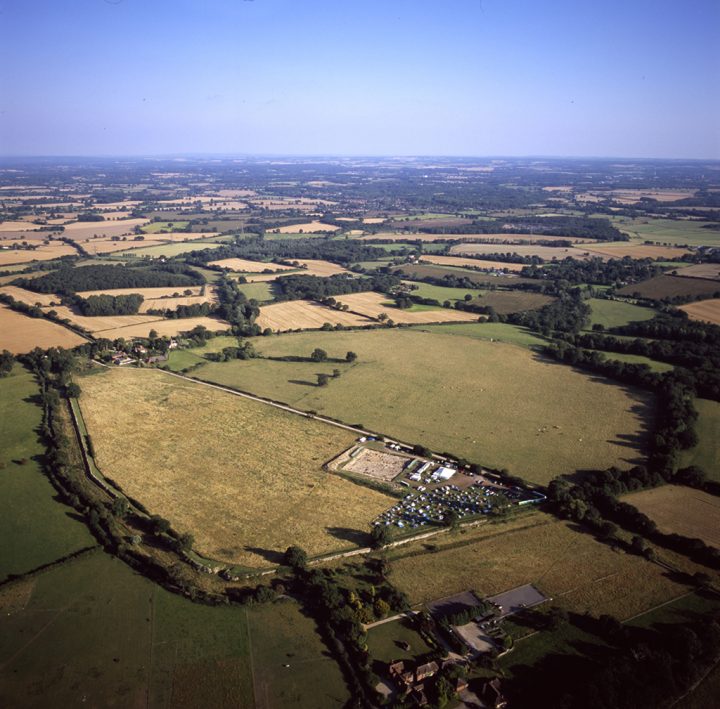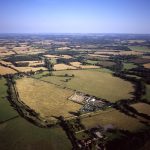Victorian finds
Local Victorian objects
Codd's mineral water bottle supplied by Charles Marchant, a baker and confectioner with premises at 31 Broad Street and 86 -88 Castle Street, Reading. His business was in operation from at least 1887 until 1898 when it appears to have been taken over by William and Francis Marchant, most likely sons of Charles. Once the business was registered to William and Francis Marchant, one might assume that C. Marchant bottles were no longer available and on this basis, the bottle could have been supplied anytime between 1887 and 1898.
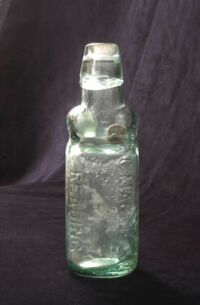

Almost complete Codd's mineral water bottle made by Allen and Sons of Basingstoke. In 1890 Allen is recorded in the Kelly's Hampshire directory as a chemist and mineral water make in Basingstoke. The bottles must post date this due to the lack of reference to the Sons..
Almost complete Codd's mineral water bottle made by Allen and Sons of Basingstoke and Aldershot. By 1895, Allen is also recorded in Aldershot. This would suggest that the bottles were purchased when the new branch was opened but with single branch bottles still being available. This dates the bottles to 1891-1894/5
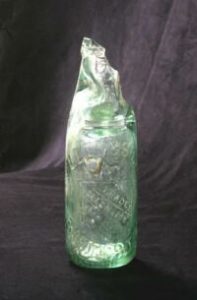
Other Victorian objects
The neck and part of the label of an 'Encore' whisky bottle survive. It is not possible to date this bottle but it does give a clue as to what the Victorian excavators were drinking!
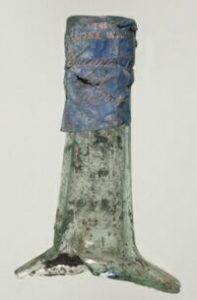

This intact bottle is a standard octagonal pale blue medicinal bottle. It was not a bottle for measured medicine as it lacks the typical measuring lines and embossed writing. Unembossed bottles were frequently used for hair restoratives such as cures for baldness (Stockton 1981, 81) but equally it is very similar in shape to the Eno's fruit salts which were a laxative (ibid 85).
A 'black' glass bottle, embossed on the base with Amsterdam and Wyn.ndfockink, the latter probably a family name. This is likely to be a Dutch beer bottle, made of dark glass to prevent light getting to the beer and 'turning' it (Stockton 1981, 146). It has a completely smooth surface required for use with paper labels (the common method of making bottles in a mould created lines of ridges) (Stockton 152).

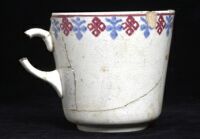
Half a Victorian teacup survives, though in fragments and now reconstructed. It does not have a maker's stamp so the source us unknown.
